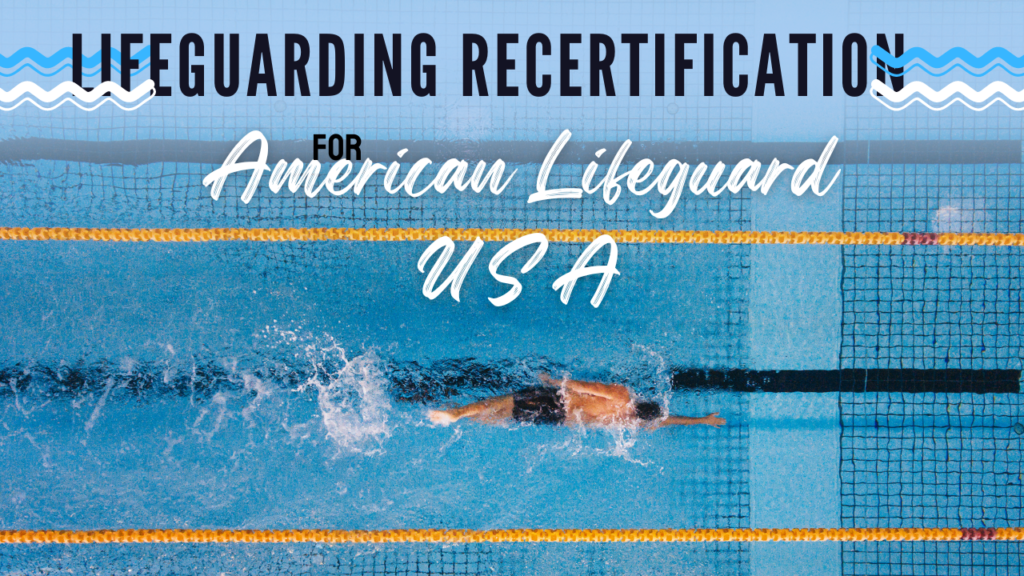Lifeguard recertification swimming in the pool is good for the health of all periods. Destroying the myth that swimming in the pool is dangerous to pregnant women
Hello, dear compendiums and guests of the blog. Did you know that swimming consumes a lot of energy due to the high resistance of water( 12 times further than air). thus, it not only allows us to lose weight, but also to strain muscles. But first effects first. Let’s see how to swim in the pool for weight loss.
Lifeguard Recertification Swimming is the safest sight sport. Unless, of course, you don’t jump from a palace . The body is supported by water, so the cargo on the joints is minimum.
During swimming, the conditioning of different muscles alternate. Some of them tense while others relax. Movements in the water are smooth and measured, the muscles outstretch, increase in volume. And our body earnings inflexibility and relief.
The chine isn’t strained during lifeguard swimming. It relieves static stress. And this means that you have the right station. Active movement of the legs strengthens the bases. This is an excellent forestallment of flat bases. In addition, sports in the pool improves the functioning of blood vessels and the heart and stimulates the work of the respiratory tract.
Regular visits to the pool can ameliorate impunity. Since when we come into contact with water, the mechanisms of thermoregulation ameliorate.
Lifeguard swimming for weight loss
I’ll calm the girls who are hysterical of getting broad shoulders and massive arms at the exit. Such a constitution requires diurnal hours of training. And not a time of assignments. Up to 2- 3 regular sessions per week you’ll lose weight and strain your figure. And that is what we need
It turns out that for weight loss, the water in the bass must have a temperature of 24 degrees andabove.However, the body will actually try to put off subcutaneous fat to warm you up, If it’s lower. You lose weight briskly in warm water!
Hot water can burn 500- 600 calories in 60 twinkles. This is, of course, with nonstop lifeguard swimming. This way you burn smaller calories in the first case.
The intensity of fat burning also depends on the way you swim. And, of course, from the original weight. altitudinous people more delicate to stay in the water. thus, they lose further calories in one session.
But indeed with a small weight, the calorie loss is emotional. With a weight of 55 kg, swim in one hour in the following styles
bottleneck takes up to 500 kcal;
on the reverse- 560 kcal;
breaststroke style says farewell to 520 calories;
butterfly- 570 kcal.
Do not choose just one swimming style. By interspersing them, you achieve the stylish result and train your body.
Lifeguard Swimming styles
Of course, it’s better to learn different ways with a coach. It’s better to work out the fashion a many times, but you swim by all the rules. This means that effectiveness will increase significantly.
Only not all 45 twinkles can be spent on one style. Now in Ufa I went to the pool again, I do it 2 times a week. Only I frequently see that numerous women shoot back and forth like a frog in a relaxed way.
Dear girls, do not swim like that. The key to success is the variety of swimming styles correct fashion. Swimming like a frog is generally nonsense if you want to lose weight.
This style is alsodangerous.However, your neck and shoulders will be strained, If you keep your head above water for 45 twinkles. The cargo substantially falls on the neck, you can get a muscle clamp.
My friend had this problem. He’d to go to the pool for a restorative massage. In addition, if you swim sluggishly like a frog, your muscles won’t work unevenly.
To crawl
This style floats on the belly. Row left and right hand alternatively. Blows are made with each hand along the body. Alternate footwork is connected to the work. It’s veritably important the face must be in the water. During the stroke, the head rotates and you can breathe. This type of swimming is the fastest.
When you swim bottleneck, you involve pecs, latissimus dorsi and shoulder muscles. The legs are less involved, but the ham muscles work nevertheless. It’s four- headed and two- headed. And of course shin muscles.
Breaststroke
This is also a form of casket lifeguard swimming. In discrepancy to freestyle, the arms and legs move resemblant to the water face then. Breaststroke is a slower form of swimming. still, technically it’s relatively delicate exercise and works other muscles.
IN this exercise the main driving force falls on the legs. Consequently, they’re the most loaded. When you swim with a breaststroke, you pump up the quadriceps and biceps femoris. The gluteal muscles, shin muscles and the adductor muscles of the ham are impeccably tensed. In the upper body, the thoracic region receives a small cargo deltoid muscle shoulder upper part of the reverse.
Also Read About: Lifeguard instrument Training
Backstroke
This style is analogous to crawling. The difference is that you swim on your reverse. The hand moves across the water in an extended state, not a fraudulent state. This style allows you to train the biceps of the shoulder, casket muscles. The deltoid muscle, the latissimus dorsi, will also work. The legs, like the rabbit, aren’t heavily loaded. But you also strain the shin muscles.
Butterfly( dolphin)
Enough delicate lifeguard swimming style. The exercise is performed on the tummy. Hands work symmetrically.


